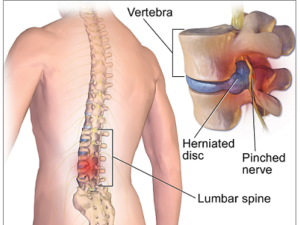Introduction
Spinal surgery refers to various surgical procedures performed on the spine to address spinal conditions or injuries. It aims to relieve pain, improve function, and stabilize or correct spinal abnormalities. Spinal surgery can involve different techniques and approaches, depending on the specific condition and goals of the procedure.

How Spinal Surgery Works
The specific details of spinal surgery can vary depending on the condition being treated, but here is a general overview of how spinal surgery works:
Preoperative Evaluation: Before the surgery, you will undergo a thorough evaluation that may include imaging tests such as X-rays, MRI scans, or CT scans. The surgeon will review your medical history, symptoms, and diagnostic results to determine the most appropriate surgical approach.
Anesthesia: Spinal surgery is typically performed under general anesthesia, which means you will be asleep and pain-free during the procedure.
Incision: The surgeon will make an incision at the appropriate location on your back or neck, depending on the area of the spine being treated.
Access to the Spine: The surgeon will gently move aside the muscles and tissues to gain access to the spine.
Treatment: The specific treatment will depend on the condition being addressed. It could involve various procedures such as discectomy (removal of a herniated disc), laminectomy (removal of the bony arches of the spine), fusion (joining two or more vertebrae together), or instrumentation (use of screws, rods, or cages to stabilize the spine).
Closure: After the necessary treatment has been completed, the surgeon will close the incision with sutures or staples.
Postoperative Recovery: You will be closely monitored in a recovery area to ensure your stability and comfort. Pain medications and other supportive measures will be provided as needed. Physical therapy or rehabilitation may be recommended to help restore mobility and strength.
When Spinal Surgery is needed
Spinal surgery may be recommended in various situations, including:
Herniated Disc: When a disc in the spine bulges or ruptures, causing pressure on the spinal nerves and resulting in pain, weakness, or numbness.
Spinal Stenosis: This condition involves the narrowing of the spinal canal, leading to compression of the spinal cord or nerves, which can cause pain, numbness, or difficulty walking.
Spinal Deformities: Conditions such as scoliosis (abnormal sideways curvature of the spine) or kyphosis (excessive forward curvature of the spine) may require surgery to correct the alignment and prevent further progression.
Spinal Fractures: Severe fractures or injuries to the vertebrae may require surgical intervention to stabilize the spine and promote healing.
Spinal Tumors: Surgical removal of tumors in or around the spine may be necessary to relieve pressure on the spinal cord or nerves.
Failed Previous Spinal Surgery: In some cases, additional surgery may be needed if a previous spinal procedure has not provided adequate relief or has resulted in complications.







